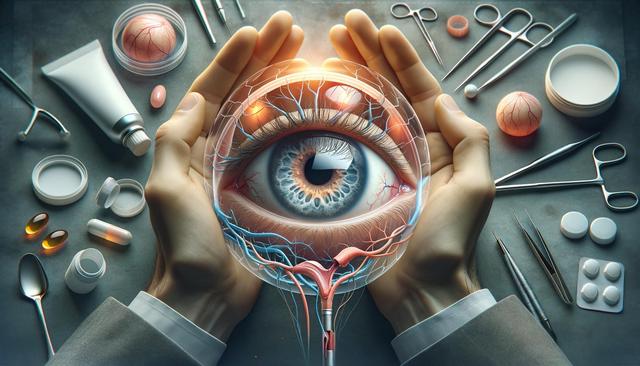Understanding Cataracts and Their Impact
Cataracts are a common eye condition that typically develops slowly over time, affecting the clarity of the natural lens inside the eye. As the lens becomes clouded, it can lead to blurred vision, increased glare, and difficulty with night driving. This condition is most prevalent among older adults, but it can also occur due to trauma, certain medications, or underlying health conditions. With the global population aging, more people are experiencing the impact of cataracts on their daily lives, prompting them to consider corrective procedures.
Symptoms of cataracts may include:
- Cloudy or blurry vision
- Faded colors
- Halos around lights
- Frequent changes in eyeglass prescriptions
- Double vision in a single eye
Recognizing these signs early and seeking a professional eye examination can help individuals make informed decisions about managing their eye health. As awareness increases, many are turning to cataract procedures as a viable solution for improving vision quality and overall quality of life.
The Growing Interest in Cataract Procedures
With advancements in medical technology and greater access to information, a larger number of individuals are considering cataract procedures than ever before. The shift is driven by several factors, including improved surgical outcomes, shorter recovery times, and the desire to maintain independence and active lifestyles as people age. In today’s digital world, people are also more informed and empowered to take charge of their health, including vision correction options.
Cataract surgery is often considered when the condition begins to interfere with everyday activities such as reading, driving, or recognizing faces. The procedure itself is typically performed on an outpatient basis and has a high success rate. Modern eye care centers emphasize patient education and personalized treatment plans, contributing to the growing confidence in choosing surgical intervention.
What to Expect from the Procedure
Undergoing a cataract procedure involves removing the clouded natural lens and replacing it with a clear artificial intraocular lens (IOL). The process usually takes less than an hour and is performed under local anesthesia. Most patients experience minimal discomfort and are able to return home the same day. Recovery is generally quick, with many noticing improved vision within a few days.
Here’s what patients can typically expect:
- Pre-operative consultation to assess suitability and select the appropriate IOL
- Fast and minimally invasive surgery
- Post-operative care instructions for optimal healing
- Follow-up visits to monitor progress and address any concerns
Each case is unique, so it’s important to discuss expectations and potential outcomes with a qualified eye care professional. While complications are rare, understanding the process helps set realistic expectations and ensures better patient satisfaction.
Advancements in Lens Technology
One of the reasons cataract procedures are becoming more popular is the innovation in lens technology. Today’s intraocular lenses offer a variety of options tailored to individual vision needs and lifestyle preferences. These advanced lenses can correct not only cataracts but also refractive errors such as nearsightedness, farsightedness, and astigmatism.
Some lens types include:
- Monofocal lenses: Provide clear vision at one distance, typically for distance vision
- Multifocal lenses: Designed to offer vision at multiple distances, reducing the need for glasses
- Toric lenses: Help correct astigmatism for sharper vision
Patients now have the ability to choose lenses that align with their daily activities, whether it involves reading, computer work, or driving. This customization enhances visual outcomes and supports the growing interest in cataract procedures as a comprehensive solution for vision improvement.
Making an Informed Decision
Deciding to undergo a cataract procedure is a significant step that should be based on thorough consultation and understanding of the options available. Eye care professionals play a critical role in guiding patients through the decision-making process, evaluating their eye health, lifestyle needs, and vision goals. A detailed eye exam and discussion about lens choices and surgical techniques help ensure a personalized approach.
Questions to consider when evaluating cataract surgery include:
- How is my vision affecting my daily life?
- What are the potential benefits and risks of the procedure?
- What type of lens implant is most suitable for my needs?
- What is the recovery process like and how long will it take?
By gathering this information, individuals can feel more confident in their choices and better prepared for the procedure. With the right support and medical guidance, cataract surgery can be a life-enhancing step toward clearer, more comfortable vision.
Conclusion: A Clearer Outlook with Modern Eye Care
As more people recognize the benefits of cataract procedures, the decision to pursue surgery is becoming increasingly common. Advances in surgical techniques and lens technology have made the process safer, more precise, and more tailored to individual needs. For those experiencing the effects of cataracts, exploring surgical options can lead to a noticeable improvement in vision and overall quality of life. Consulting with a trusted eye care provider is the first step toward regaining visual clarity and maintaining independence. With informed decision-making and modern resources, clearer vision is within reach for many individuals considering cataract correction today.




Leave a Reply